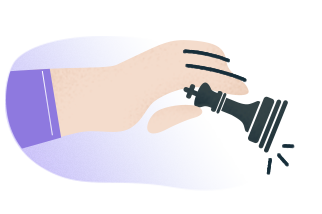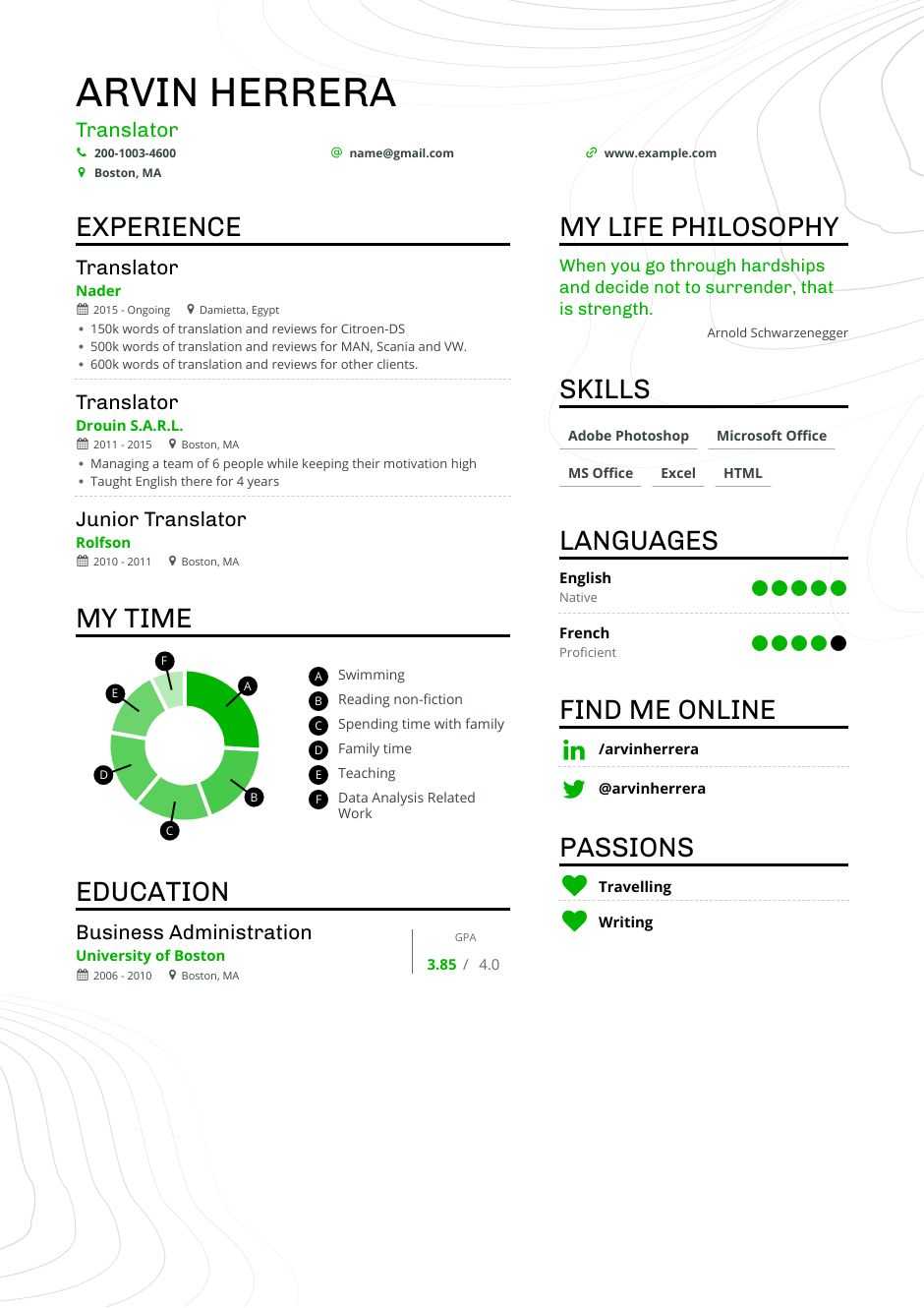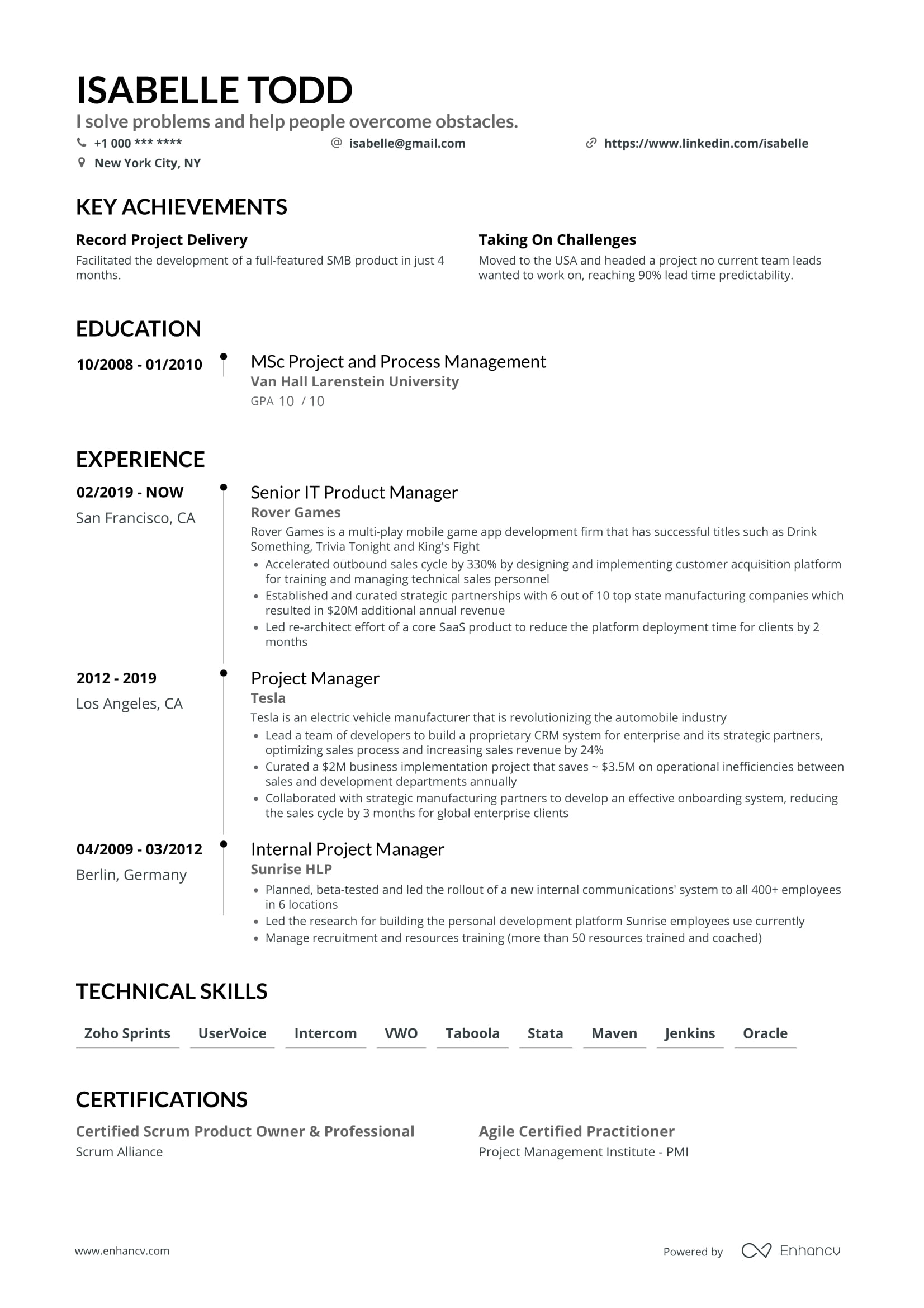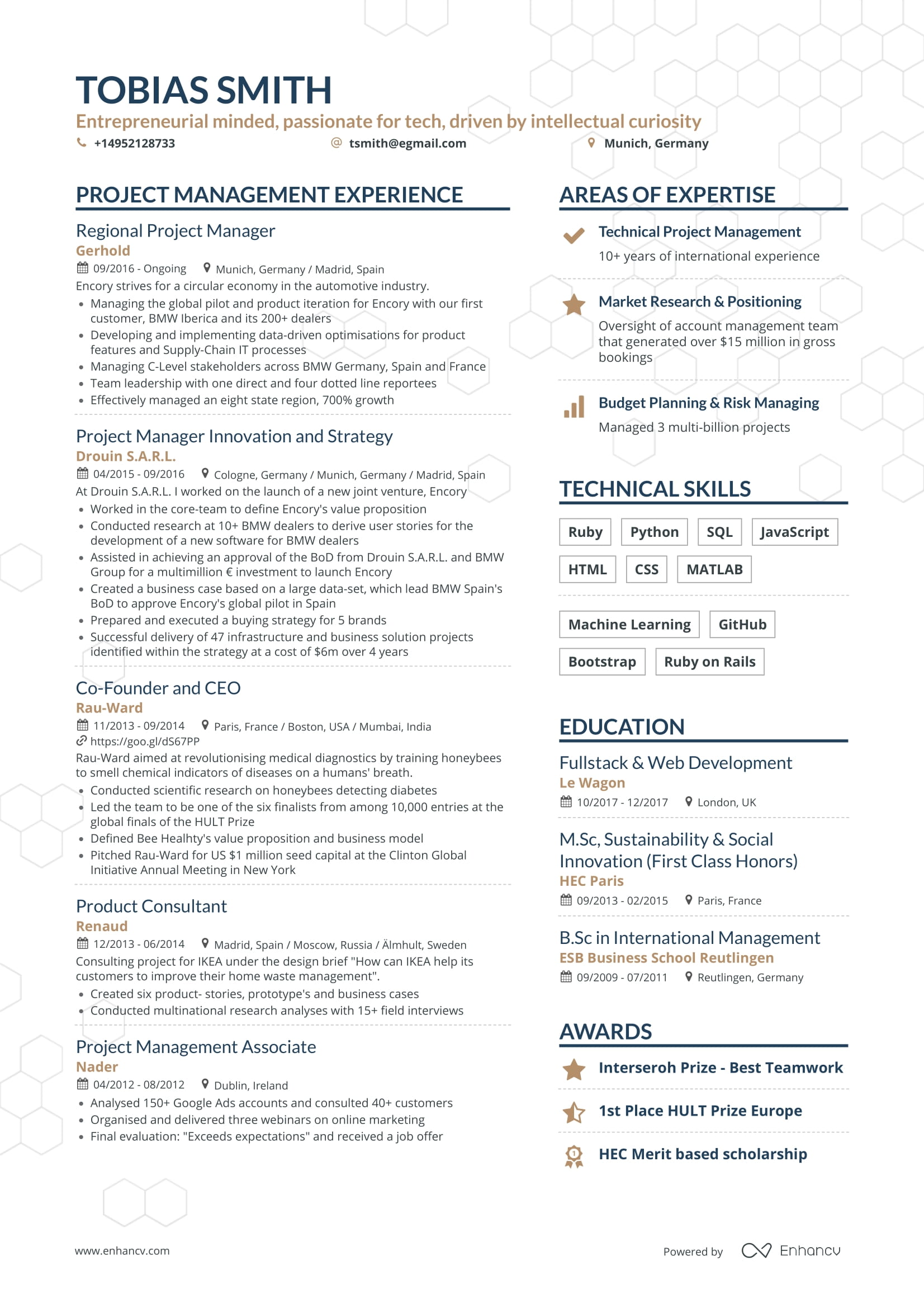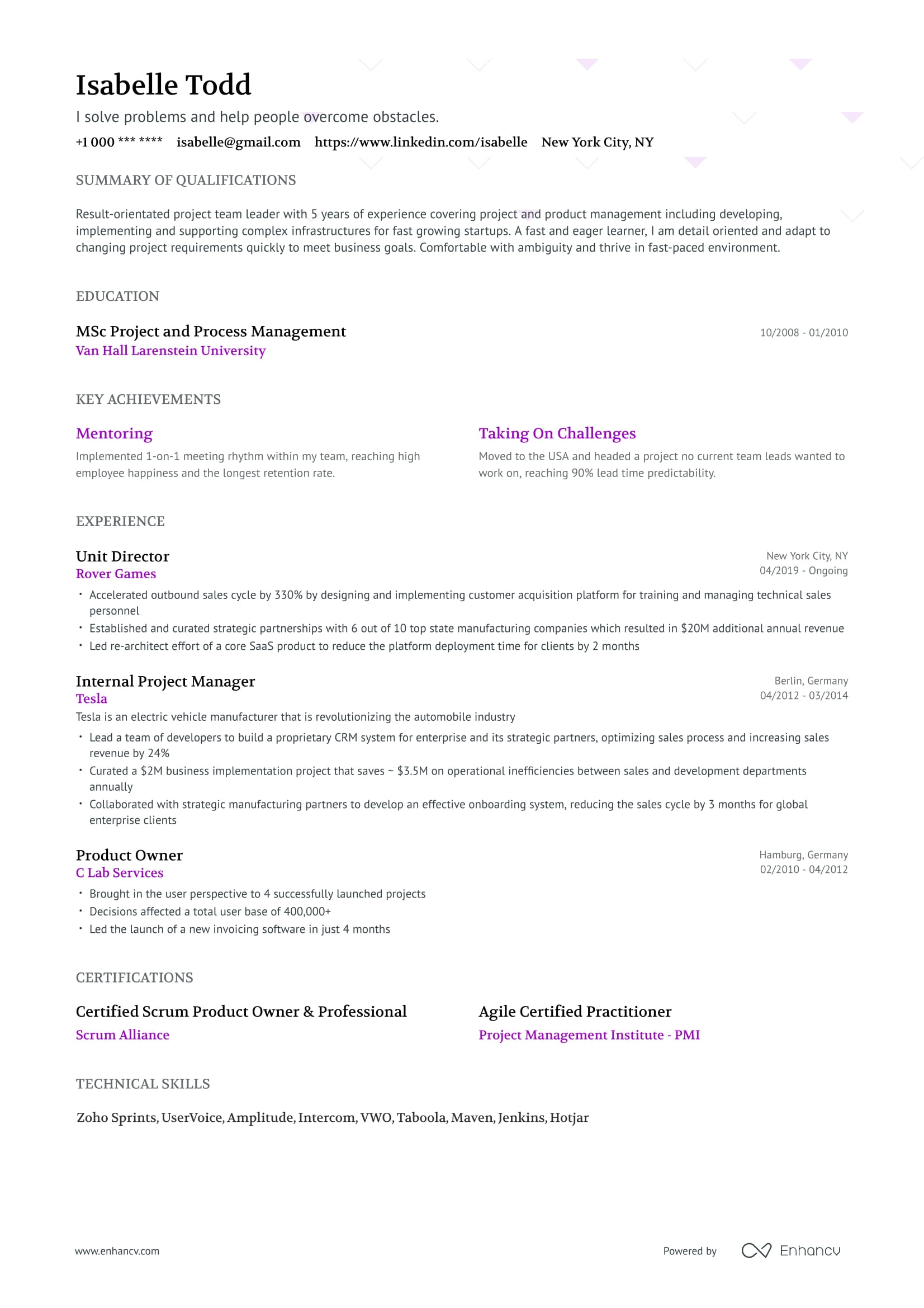Example Translator Resume - Browse more resume templates and build a stand-out resume
As a translator, you’re the bridge that joins the languages of the world together.
You break the language barrier, connecting people and spreading knowledge.
Whether you’re looking for your first job or fifth job as a translator, your resume needs to stand out.
The first thing recruiters need to know about you is of course your language proficiency.
But after that, they’re looking for attention to detail, strong communication skills, and the ability to work well with people.
Can you convince a hiring manager or recruiter that you have what it takes to translate from one language to another flawlessly – especially when dealing with sensitive information?
With the help of this guide, you will write a translator resume that builds trust and lands you an interview.
Let’s get started.
What you’ll learn here
- How to present an eye catching and accessible resume that gets you interviews
- The right details to include in your resume header
- Ways to work your skills into all sections of your resume
- How to write an experience section that has everything recruiters look for
- What to include in your education and certification sections
Translator resume example
How to write a translator resume
You’re the glasses to the blurry-eyed when it comes to accessing words, information, speeches, websites, subtitles, books, novels and any other form of communication in another language.
You help people to understand what they couldn’t understand before.
You break down the language barriers.
This takes linguistic expertise, attention to detail, an understanding of tone, and an appreciation of foreign cultures.
Can you prove to a recruiter that this is something you have?
For communication to be effective, it needs to make perfect sense to those who are reading it.
The first step you should take before sitting down to write (or edit) your resume is to look at the job description. What experience, skills and qualifications is the role calling for? What kinds of language and buzzwords do they use?
These are all clues to what you should include and not include in your resume. Focus on what’s most relevant for the role. Weave those buzzwords into your summary, experience and skills sections to make the best impression.
Top sections in a translator resume
- Work experience section starting with the most recent role
- Summary that shows recruiters that you’re the right fit
- Education section, including any undergraduate degrees in language, linguistics or translation
- Skills section: both technical and soft skills
What recruiters want to see in a translator resume
- Which languages you’re proficient in
- If you have an understanding of the field related to the work that needs translating
- If you have certifications or a bachelor's degree in languages
- How you successfully converted source material into other languages in the past
- A well formatted resume with information that’s clear and scannable
How To Write a Resume Header
Headers are where you introduce yourself.
They include your personal details, contact information, and reveal the first snippets of information about your professional level.
2 Translator resume header examples
Let’s pretend that you’re applying for a translator of Chinese content and localization role as a freelancer.
Many headers look as basic as this:
If recruiters aren’t impressed with the resume header, they’re going to read the rest of the resume with a sour impression.
The information in this header may be right, but it may give the impression that you’re applying for many jobs with the same resume. It’s too general.
Update your resume header to communicate directly to the recruiter.
Here’s how:
Recruiters know immediately that you’re a translator that specializes in Chinese content and localization.
If this hypotheticaljob descriptionasked specifically for these skills, they're much more likely to read your resume.
Includingmultiple methods for contact and external links to sites, likeLinkedIn, works in your favour too.
Communicate Your Ability to Connect With Your Summary
So your resume is still in the hands of the recruiter thanks to your quality header.
When they scan the rest of the page, it needs to be neat. The sections need to jump out with information that they’re set out to find.
Luckily, the employer will have told you their ideal candidate is in the job description. Look out for what they mention in the qualifications, responsibilities or requirements section of the job description.
It’s time to show them that you’re paying attention and have what they need.
Do you speak, write and understand their target language(s)?
Do you meet their required number of years of experience?
Which translation tools are you familiar with? Are they mentioned specifically on the job description?
In what way will your skills solve the problem they seek to solve?
Do they have strict deadlines? Are you skilled at meeting them? With working as a team?
Include the most important points and keep it brief. A maximum of four lines is just right for the summary. You can dive into more detail later on in theexperience section.
2 Translator resume summary examples
For instance, let’s say a company is looking for translators to convert Korean stories into English for a new app.
Here’s a bad example:
Notice what’s missing?
- No years of experience
- The area of specialization is unclear
- No translation tools are mentioned
- No indication of the level of ability
This time, we’ll add those in:
Details of the professional level and area of specialization is quickly followed by years of experience in relevant roles.
The language proficiency is clearly defined, and specific tools are mentioned.
Great! Time to link up your summary with your experience section and zoom in on your achievements.
Build Trust With Your Translator Experience Section
Here is the section where you begin to build trust with your potential employer or client.
You do this by:
- Including the names of past clients and companies
- Going into detail about your role and responsibilities
- The technical and soft skills you made use of
- How long you worked on each project
- Achievements from previous projects
- How you interacted with other team members
Remember to be careful to include only information that is actually relevant to the position you’re applying for.
2 Translator resume experience examples
Here’s how not to do it:
This description leaves much to answer for:
- What kind of work was done?
- What was the industry?
- Were there any highlights or achievements?
- What technical and soft skills were used?
Let’s improve on it:
This has much more to offer to the recruiter.
First of all, extra details have been accounted for, like location and specifics about the position title.
The description tells the employer exactly what the role entailed, and clearly states the field of specialization.
Special mention is given to the communication and collaboration skills – two essential traits of a successful translator.
Let’s take a more detailed look at some other essential traits and skills to list on your resume.
How to List Translation Skills on Your Resume
Whileskills should appear on your resume in their own dedicated list, it's important to weave them into your job experience too.
Merely listing skills doesn’t prove anything.
You have to show how you’ve used them in your experience section.
That being said, your skills do deserve their own section.
There are two categories of skills: technical skills and soft skills.
Technical skills encompass your actual translation abilities, language proficiency, and your familiarity with Computer Assisted Translator (CAT) tools like Trados, MultiTrans and WordFast. These skills can also cover collaborative tools, like Skype or Zoom.
Soft skills are the personality traits and qualities of a good translator, such as attention to detail, self motivation, communication, and your ability to work well with a team.
Here’s a list of the top skills that a translator would potentially have.
11 Technical Translator Skills to Include On Your Resume
- Trados
- MultiTrans
- WordFast
- Grammarly
- Memsource
- Zoom
- Skype
- SDL Multiterm
- Logiterm
- Termex
- MS Office
- Language proficiency (eg. Fluent in French)
12 Soft Skills to Include On Your Resume
- Advanced linguistic knowledge
- In-depth cultural knowledge
- Excellent writing abilities
- Experienced collaborator
- Effective researching ability
- Attention to detail
- Organized
- Self motivated
- Adaptable
- Dependable
- Problem solver
- Ability to work remotely
- Communication skills (written & verbal)
Should You Include an Education Section On Your Translator Resume?
You should definitely elaborate on relevant education related to the target languages of the jobs you’re applying for, plus any linguistic and translation-related education that you have.
Lots of translator roles require a Bachelor’s degree in linguistics or translation, or the equivalent in experience.
Show your dedication to ongoing learning by including any studying currently underway.
When writing youreducation section, include:
- The name of the institution you studied at
- Yourmajor/minor
- The years you studied
- Relevant coursework or achievements
What About Certificates?
Certifications give confidence to your recruiter that you have formal training.
List thecertificationsthat are mentioned in the job description first, before including any additional certifications.
Your country, state or province might have specific translation certificates, so keep an eye out for those. For example, the U.S.A. has the ATA certification (American Translators Association). The province of Quebec in Canada has the OTTIAQ certification.
Include whatever certification you have that is relevant to your location or industry.
Key takeaways
- Showcase your experience in successful translator roles.
- Be clear with your roles, areas of specialization and provide details of how you worked and what you achieved.
- Include keywords, technology, and certifications from the job posting.
- Format each section to be easily scannable, and include the most relevant information first.
